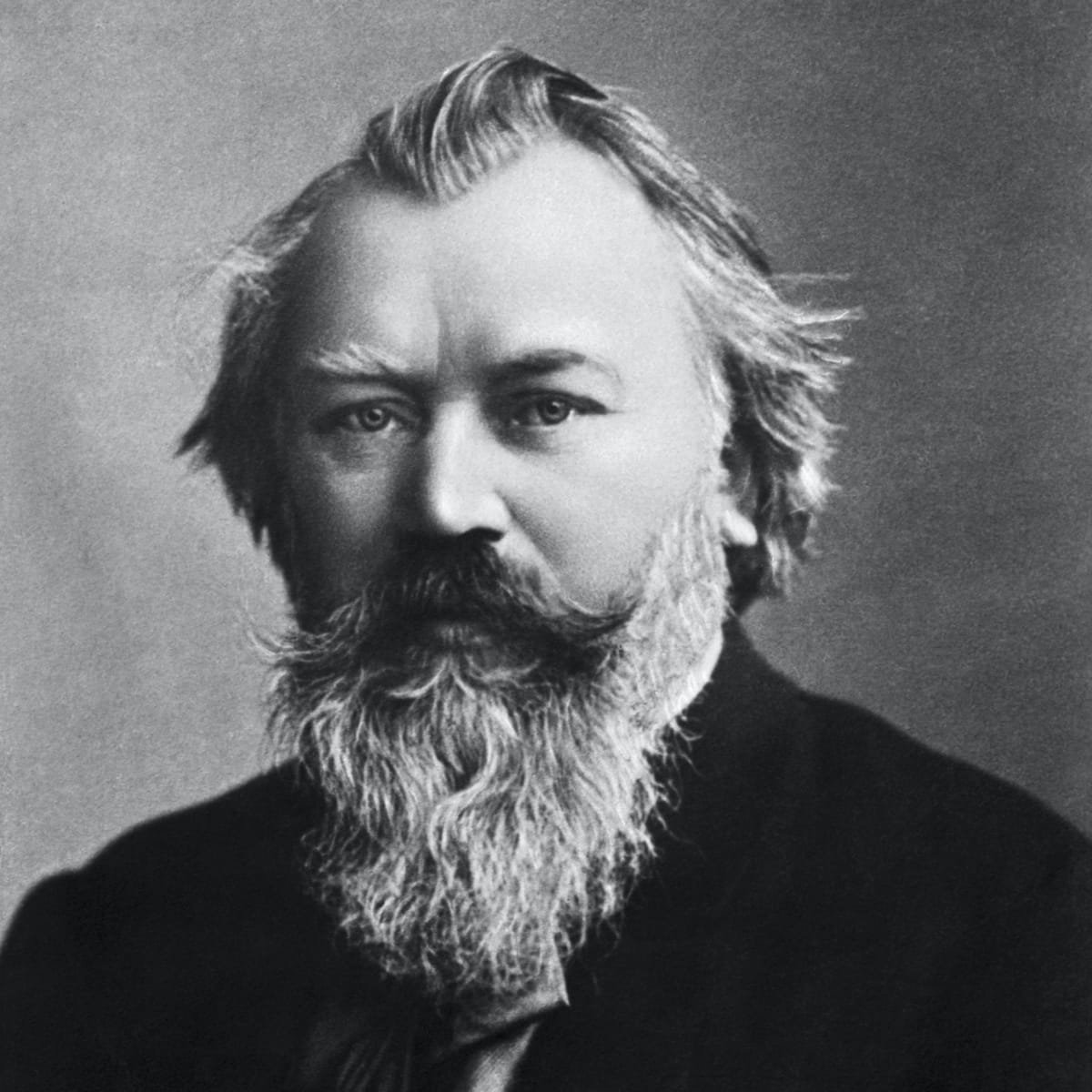Johannes Brahms: A Composer in the Romantic Era
Historians credit the Romantic era (ca. 1810-1910) with the “innovation” of rejecting strict classical form in favor of drawing inspiration from nature, legends and folklore, and creating characters both tragic and heroic. In music, composers made freer use of chromaticism. Romantic music was “marked by an emphasis on individuality, personal emotional expression and freedom and experimentation of form” (Brittanica). Johannes Brahms was an odd bird in that he was staunchly situated in the middle of the Romantic era. However, he enjoyed looking backward to Beethoven and even further back into the Renaissance era. While maintaining his gaze on the past, Brahms indulged the Romantic tendency to use his work as a form of personal emotional expression, especially in his first Violin Sonata.
Context: Brahms’ Career
At the time of writing his first Sonata, Brahms was midway through his composing career. He was already well-established and admired as a musician in Europe. Brahms premiered his first symphonies in the same five-year span; had been offered the historic position of cantor at the St. Thomas Cathedral in Leipzig – Bach’s former post; and was awarded an honorary doctorate from the University of Breslau. In short, the man was doing very well for himself. The letters collected from Brahms’ life show that he had a flavorful personality. He tended to announce to family and friends about little tidbits of work coming down the pike. One can hear the chuckle in his voice when he wrote to his friend, violinist and composer Joseph Joachim, about a “few lines for [Joachim] to look at”. Those “few lines” turned out to be his famous violin concerto, premiered the winter of 1879, the season before writing his first published violin sonata. As it turned out, Brahms had already written three unpublished violin sonatas before “officially” penning his G major sonata. Interestingly, he wrote the sonata to comfort an old flame, Clara Schumann, at the recent loss of her son, Felix (Swafford).
Inspiration for Violin Sonata No. 1
This particular Sonata is a perfect example of Brahms the quintessential Romantic. It marries two examples of Romanticism in the written and musical arts. Brahms used two songs in his first Violin and Piano Sonata. Regenlied (Rain Song) was special: it was Clara’s favorite. The “whole sonata is a fantasy upon the song and an echo”, said Billroth, Brahms’ publisher, referencing both Regenlied and the other song quoted, Nachklang (Echo). Both these songs provide context for the Sonata. The piece places the musicians and audience indoors, in the parlor next to the piano on a rainy evening, while both performers and audience reminisce on their childhood. The violin performs the Sonata vocally, which is readily apparent by its singing melodies. Brahms even provides a naturalistic touch by writing in the pitter patter of raindrops in the third movement.
A Visual, Philosophical Work
“Interruptive episodes” figure throughout the Sonata, like emotionally-charged memories interrupting each other. The second theme in the first movement becomes the funeral march for Clara’s late son in the Adagio – a symbol of Death. A terribly somber thought! But Brahms writes the movement in a way that symbolizes the transcendence of Death, especially with its quiet resolution into a major key. The third movement incorporates many of these interruptive episodes while knitting together the lieder and the themes in the previous movements, bringing the Rain Song Sonata to a quiet close.

